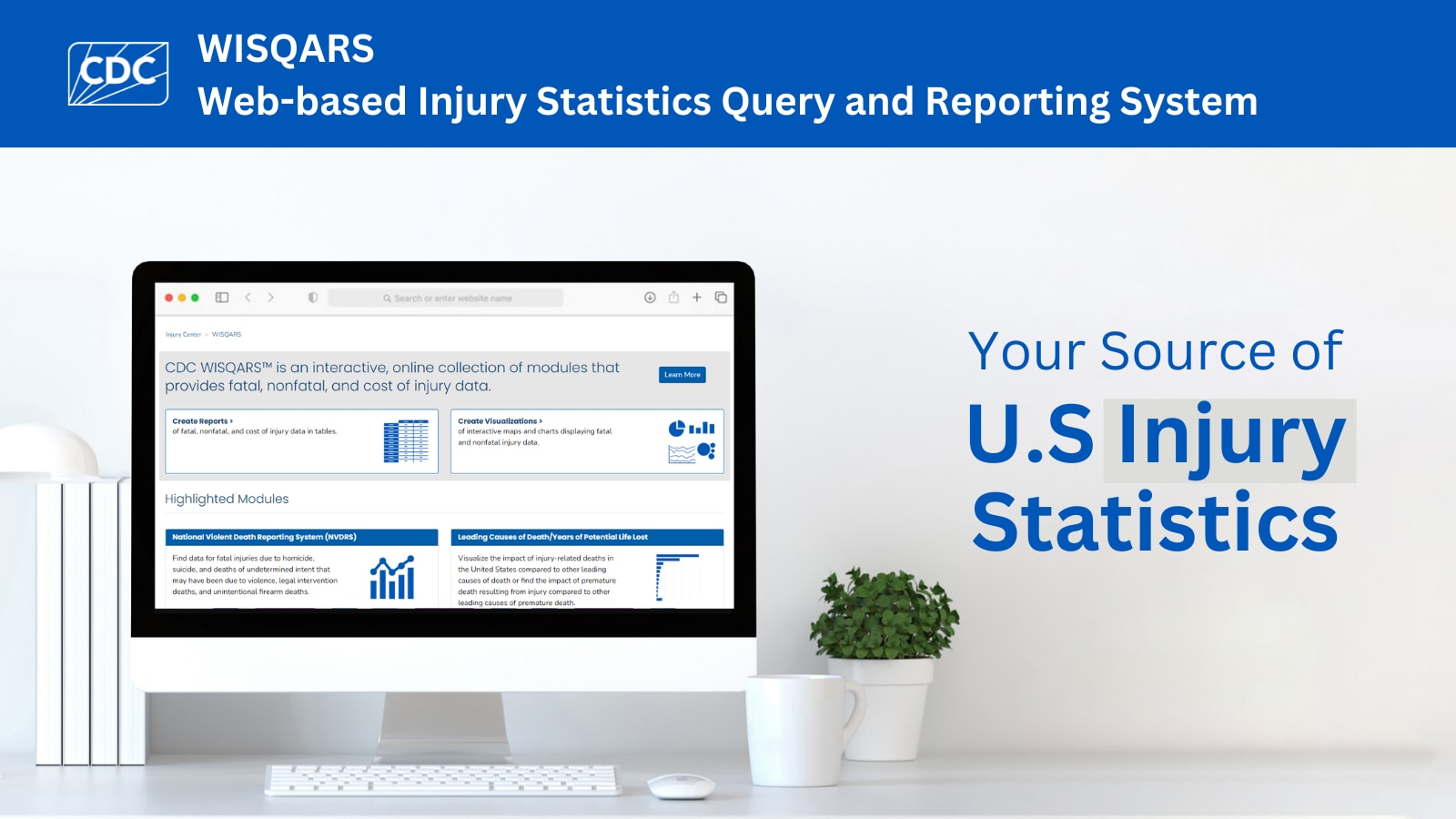At a glance
This page contains data sources for injury prevention including WISQARS, along with other sources from CDC, federal agencies, and non-federal agencies.

Guidelines for reporting on suicide

The way media cover suicide can influence behavior positively by encouraging help-seeking or negatively by contributing to contagion.
CDC data systems and sources
WEB-BASED INJURY STATISTICS QUERY AND REPORTING SYSTEM (WISQARS)
CDC's interactive, online database provides fatal and nonfatal injury, violent death, and cost of injury data.
NATIONAL VIOLENT DEATH REPORTING SYSTEM (NVDRS)
CDC funds the National Violent Death Reporting System (NVDRS) in all 50 states, the District of Columbia, and Puerto Rico to gather, share, and link state-level data on violent deaths. NVDRS provides CDC and states with a more complete understanding of violent deaths. This enables policymakers and community leaders to make informed decisions about violence prevention programs, including those that address suicide.
NATIONAL ELECTRONIC INJURY SURVEILLANCE SYSTEM-ALL INJURY PROGRAM (NEISS-AIP)
NEISS-AIP provides nationally representative data about all types and causes of nonfatal injuries treated in United States hospital emergency departments. CDC uses NEISS-AIP data to generate national estimates of nonfatal injuries, including those related to self-harm.
CDC WONDER: WIDE RANGING ONLINE DATA FOR EPIDEMIOLOGIC RESEARCH
CDC WONDER manages nearly 20 collections of public-use data for U.S. births, deaths, cancer diagnoses, tuberculosis cases, vaccinations, environmental exposures, and population estimates, among many other topics. These data collections are available as online databases, which provide public access to ad-hoc queries, summary statistics, maps, charts, and data extracts.
YOUTH RISK BEHAVIOR SURVEILLANCE SYSTEM (YRBSS)
CDC's YRBSS monitors health risk behaviors that contribute to the leading causes of death, disability, and social problems, including suicide attempts and related behaviors, among 9th through 12th grade students in the United States.
THE NATIONAL AMBULATORY MEDICAL CARE SURVEY (NAMCS)
NAMCS is designed to meet the need for objective, reliable information about the provision and use of ambulatory medical care services in the United States. Findings are based on a sample of visits to non-federally employed office-based physicians who are primarily engaged in direct patient care and, starting in 2006, a separate sample of visits to community health centers.
THE NATIONAL HOSPITAL AMBULATORY MEDICAL CARE SURVEY (NHAMCS)
NHAMCS is designed to collect data on the utilization and provision of ambulatory care services in hospital emergency and outpatient departments and ambulatory surgery locations. Findings are based on a national sample of visits to the emergency departments, outpatient departments, and ambulatory surgery locations of non-institutional general and short-stay hospitals.
Leading causes of death (WISQARS)
ANIMATED TOP TEN LEADING CAUSES OF DEATH IN THE U.S.
CREATE YOUR OWN LEADING CAUSES OF DEATH CHART THROUGH WISQARS.
WISQARS Leading Causes of Death: Suicide
Suicide is the fourth leading cause of death for people ages 10-54 in 2019-2021.
WISQARS: Suicide Data Visualization by Age Group
Some age groups are at higher risk for suicide than others.
Other federal data sources
NATIONAL SURVEY ON DRUG USE AND HEALTH (NSDUH)
NSDUH provides up-to-date information on substance use, mental health conditions, and suicide-related behaviors in the United States.
NATIONAL INPATIENT SAMPLE (NIS)
The NIS is a database of hospital inpatient stays used to identify, track, and analyze national trends in health care utilization, access, charges, quality, and outcomes including injuries from suicide attempts.
Non-federal data sources
GLOBAL HEALTH OBSERVATORY (GHO) DATA
GHO is WHO's gateway to health-related statistics for more than 1,000 indicators for its 194 Member States.
